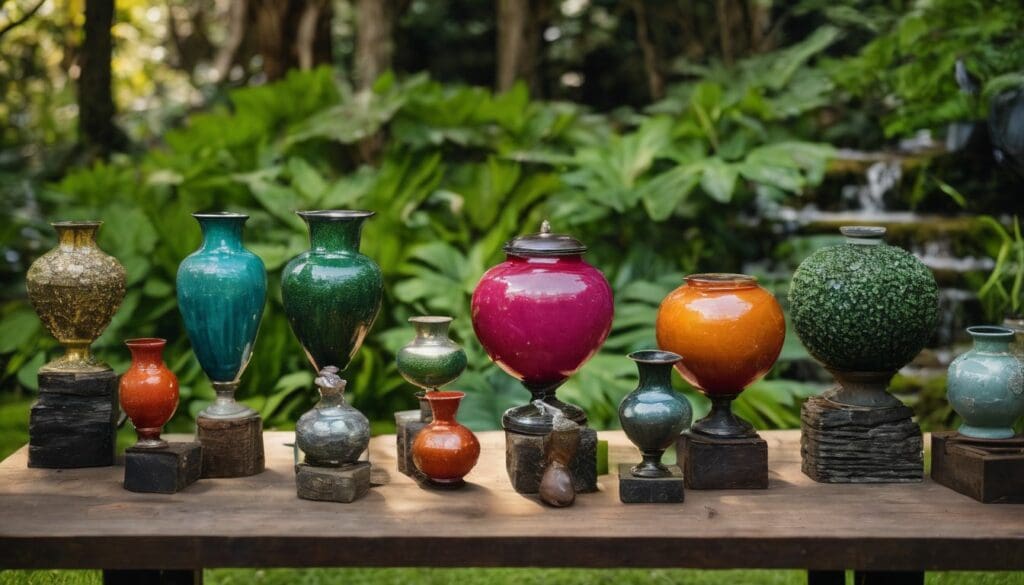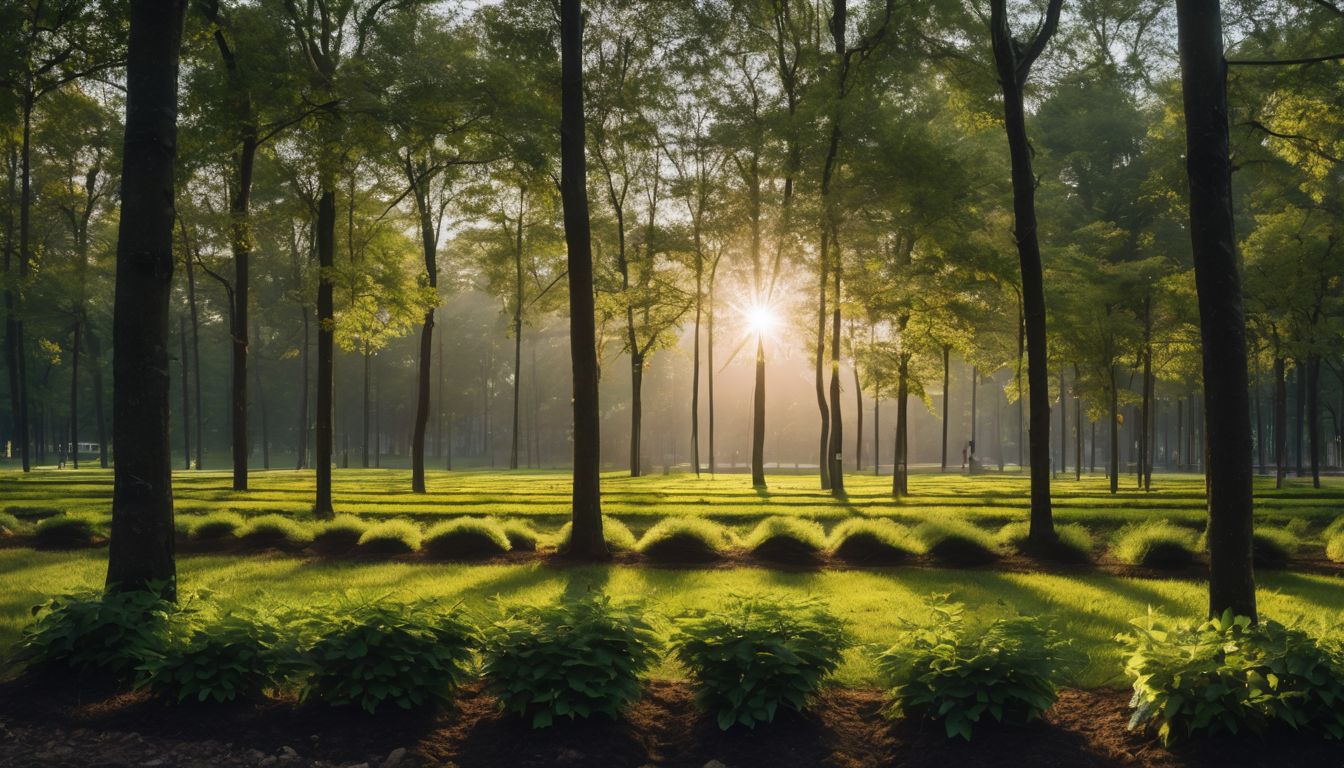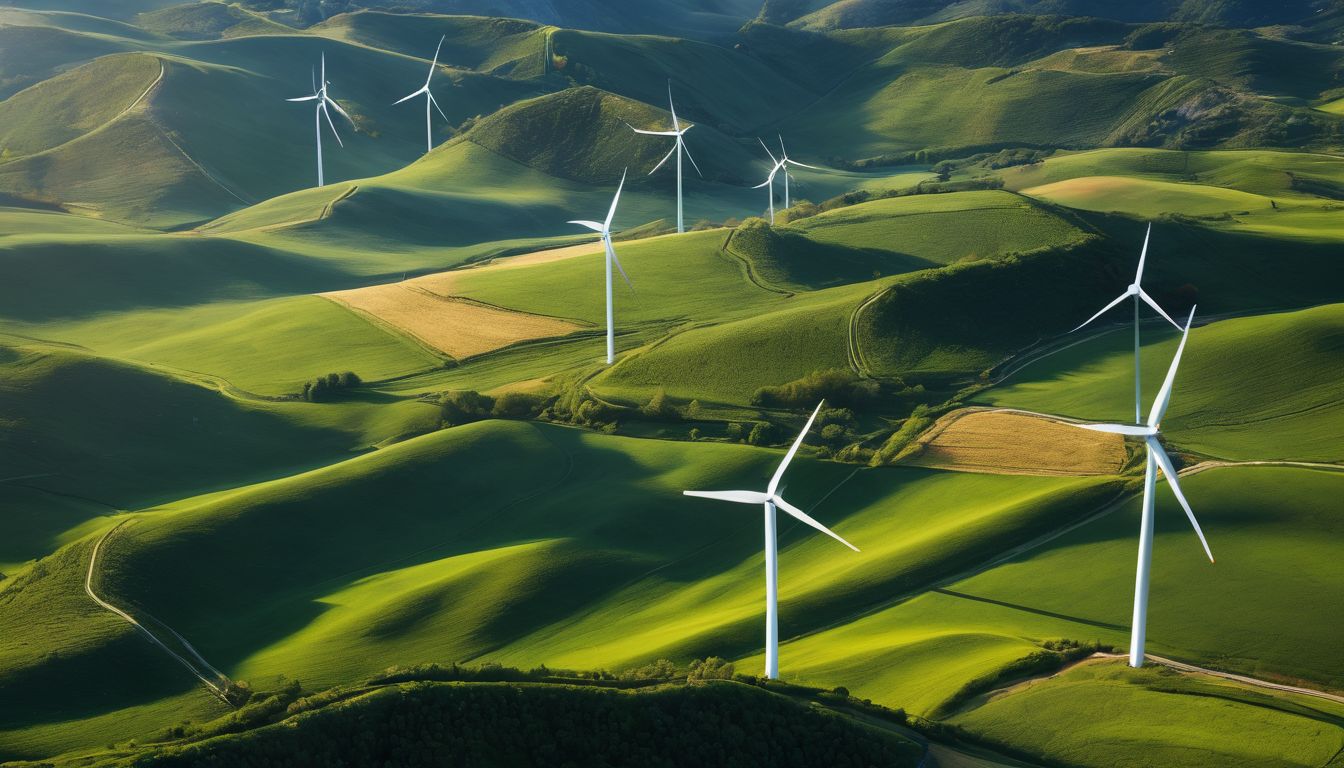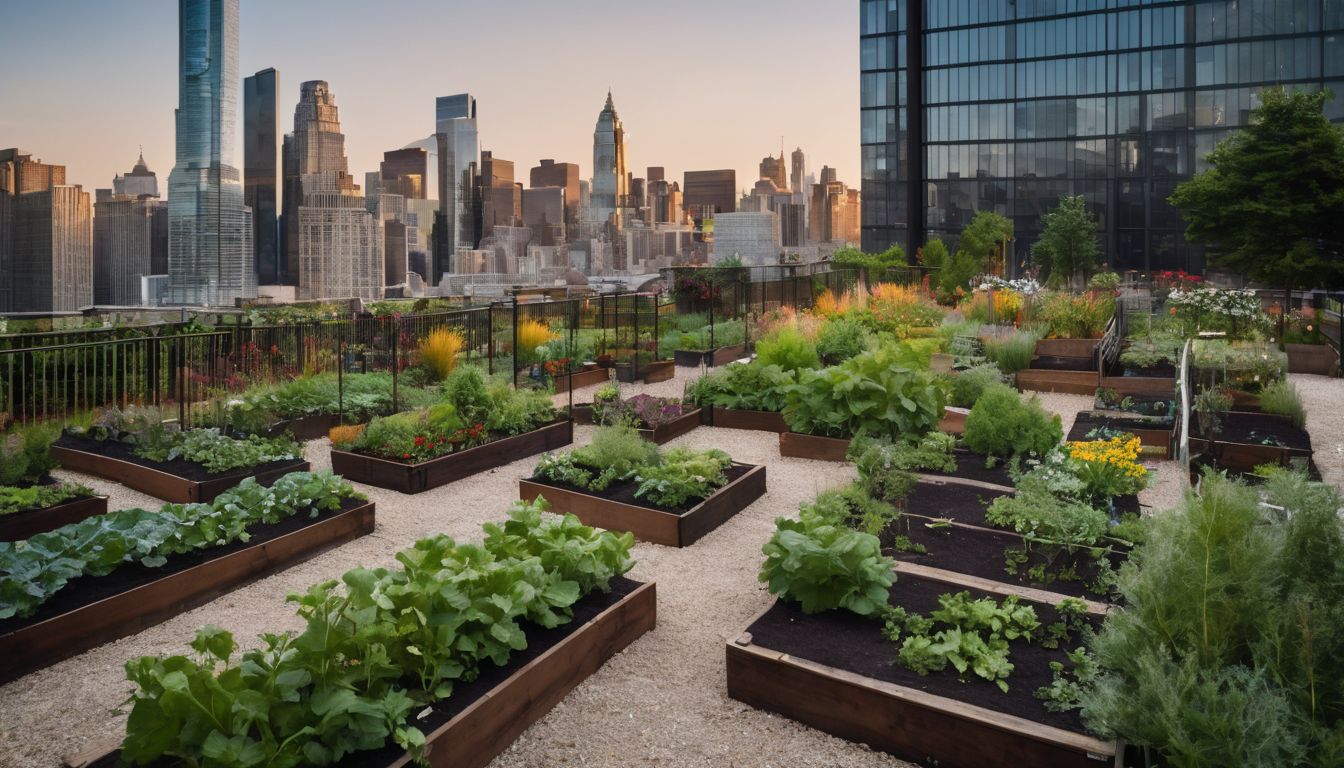Many of us worry about the environment and wonder how we can make a difference. Art exhibitions are increasingly embracing sustainability, with more artists using eco-friendly practices to make a statement.
Our post will guide you through organising a community art show that celebrates the planet and inspires positive change. Dive into a world where creativity meets conservation!
Key Takeaways
- Eco-friendly art exhibitions showcase sustainability through creative expression, encouraging artists to use recycled materials and non-toxic supplies.
- Engaging with local and indigenous artists for a community eco – art exhibition supports the local economy and promotes diverse cultural perspectives on environmental issues.
- Educational components like workshops and interactive displays play a crucial role in teaching visitors about sustainable practices at eco-art events.
- Collaborative efforts between the organising team, artists, and community members are essential for creating an impactful eco-art exhibition that resonates with attendees.
- Choosing ethical suppliers ensures that every aspect of the exhibition aligns with sustainability goals while also reducing carbon emissions from transport.
The Intersection of Sustainability and Art
The rise of eco-friendly art exhibitions has gained momentum in response to the influence of climate change on art and the power of eco-conscious art collectors. This intersection highlights the need for sustainable practices within the arts community and beyond.
The rise of eco-friendly art exhibitions
Eco-friendly art exhibitions are taking the world by storm as artists and curators strive to create spaces that highlight sustainability. These events showcase how the arts can champion environmental messages while reducing their own carbon footprint.
Visitors experience a fusion of creativity and eco-consciousness, often walking away with a deeper appreciation for both art and planet Earth.
Galleries across the globe now prioritise using recycled materials, natural lighting, and non-toxic supplies to make these exhibits come alive. Public interest in these green showcases has skyrocketed, signalling a shift towards more responsible art consumption and production.
This trend not only reflects growing environmental concerns but also encourages artists to innovate within greener boundaries—turning trash into treasures or drawing attention to pressing ecological issues through powerful installations and thought-provoking public artworks.
The influence of climate change on art
Climate change has significantly impacted the art world, sparking a shift towards eco-conscious and environmentally themed artworks. Artists are using their creative platforms to raise awareness about environmental struggles, climate action planning, and the urgent need for sustainable practices.
This has led to an increase in exhibitions showcasing pieces that reflect the challenges posed by climate change while advocating for conservation and environmental stewardship through art installations.
Artists are harnessing their talents to voice concerns about the ecological crisis we face today, captivating audiences with thought-provoking pieces that encourage reflection and action.
By engaging with these eco-friendly artworks, individuals can gain insights into pressing environmental issues and be inspired to support conservation efforts in their communities.
The power of eco-conscious art collectors
The influence of climate change on art has sparked a shift towards eco-conscious art collectors. These individuals actively seek out artwork that reflects sustainable practices and environmental awareness.
As they invest in pieces created with eco-friendly materials and methods, they encourage artists to embrace environmentally responsible techniques. By supporting these artists, eco-conscious collectors play a vital role in promoting sustainability within the artistic community and beyond.
Eco-art enthusiasts are not just acquiring aesthetically pleasing pieces; they are driving positive change by encouraging artists to adopt sustainable practices while also spreading awareness about environmental issues through their collections and contributions to the art world.
Creating an Eco-Friendly Exhibition
When planning an eco-friendly exhibition, it is important to carefully select sustainable and non-toxic materials. This includes using recycled or upcycled materials, as well as avoiding toxic paints and glues that can harm the environment.
Choosing eco-friendly materials
- Opt for recycled or sustainable materials such as paper, wood, and fabric.
- Use non – toxic paints and glues to minimise environmental impact.
- Explore reusable and biodegradable display options like bamboo easels and cork boards.
- Consider natural alternatives to traditional art supplies, such as plant – based inks and dyes.
- Source materials from environmentally conscious suppliers who prioritise sustainability.
Reusing and recycling materials
To minimise waste and reduce our environmental impact, reusing and recycling materials is crucial. Here are some practical ways to incorporate this into the exhibition planning process:
- Utilise reclaimed or repurposed materials for art installations and displays.
- Encourage participating artists to use recycled or upcycled materials in their artwork.
- Implement a system for collecting and repurposing exhibition signage and promotional materials for future events.
- Source eco – friendly packaging materials for transporting and storing art pieces.
- Partner with local recycling facilities to ensure proper disposal of any leftover materials after the exhibition.
Avoiding toxic paints and glues
- Opt for water-based or plant-based paints, which have minimal impact on the environment and human health.
- Choose natural adhesives such as glue made from plant-based ingredients or bio-resins to eliminate harmful emissions.
- Check labels for toxic substances like volatile organic compounds (VOCs) and opt for products that are low in or free from these chemicals.
- Prioritise non-toxic alternatives like milk paint, clay paint, or soy-based ink for a healthier and more sustainable art creation process.
- Provide artists with information on eco – friendly painting methods and sustainable adhesive options to encourage environmentally conscious choices.
Raising Awareness Through Art
Using art as a medium for awareness, collaborating with local artists and communities, and educating visitors on sustainable practices. Find out how you can make a difference through community eco-art exhibitions!
Using art as a medium for awareness
Art plays a powerful role in raising awareness about environmental issues. Through impactful visual representations, artists can communicate the urgency of conservation and sustainable living.
Art has the ability to evoke emotions, provoke thought, and inspire action, making it an effective tool for educating and mobilising communities. By showcasing eco-conscious art at exhibitions and collaborating with local artists, we can amplify the message of environmental stewardship.
This engagement not only fosters a deeper appreciation for nature but also encourages individuals to adopt sustainable practices in their daily lives.
Collaborating with local artists and communities
Transforming art into a tool for environmental advocacy involves collaborating with local artists and communities. Engaging in meaningful partnerships, we can harness the power of diverse perspectives to create impactful eco-art.
By involving indigenous and local artists, we infuse our exhibition with authentic representations of sustainability and environmental stewardship, resonating deeply with visitors.
Furthermore, by actively involving the community in the curation process, we foster a sense of ownership and pride in promoting sustainable practices through art.
Empowering local artists and communities enriches the narrative of our exhibition while reinforcing its connection to real-world issues. This collaboration not only amplifies the impact of our message but also creates a sense of shared responsibility among all participants, fostering an ongoing commitment to environmental conservation.
Educating visitors on sustainable practices
Visitors to the eco-art exhibition will be educated on sustainable practices to promote environmental conservation and support local artists. Through educational displays and interactive workshops, attendees can learn about sustainable art materials, ethical sourcing, and the impact of art on the environment. They will also have the opportunity to engage with local artists who incorporate sustainability into their work.
- Interactive Workshops: Attendees can participate in workshops led by local artists, where they can learn about eco-friendly art techniques and create their own sustainable artwork.
- Educational Displays: The exhibition will feature informational displays highlighting the use of recycled materials, sustainable art processes, and the environmental impact of traditional art practices.
- Artist Talks: Local artisans will give talks on their creative process, discussing how they integrate sustainability into their work and how art can inspire environmental stewardship.
- Collaborative Art Projects: Visitors can take part in collaborative projects that demonstrate how individuals can use creativity and sustainable practices to make a positive impact on the environment.
- Sustainable Lifestyle Tips: Informational materials will offer practical tips for incorporating sustainability into everyday life, encouraging visitors to make small changes for a greener future.
Supporting the Local Economy
Emphasising the importance of using sustainable and ethical suppliers for materials and showcasing local and indigenous artists to support the local economy while promoting environmental stewardship through art.
This section will explore how a community eco-art exhibition can positively impact the local economy and promote sustainability.
Using sustainable and ethical suppliers
- Choose suppliers who prioritise sustainability in their production process, ensuring minimal waste and energy consumption.
- Look for ethical suppliers who pay fair wages and adhere to environmental regulations, promoting social and environmental responsibility.
- Prioritise suppliers who offer eco – friendly packaging options, reducing unnecessary waste.
- Support businesses that demonstrate a commitment to sustainable practices, promoting a positive impact on the environment.
Showcasing local and indigenous artists
Local and indigenous artists play a vital role in the fabric of our community, bringing their unique perspectives and cultural heritage to the forefront. Their art reflects a deep connection to nature and sustainability, making them an essential part of any eco-art exhibition.
By showcasing their work, we not only support local talent but also celebrate diverse artistic expressions that resonate with environmental consciousness.
Highlighting local and indigenous artists allows us to better understand the intersection between art, culture, and the environment. It fosters a sense of inclusivity while promoting sustainable practices within our communities.
Community Involvement and Impact
Engaging the community in the exhibition planning process will foster a sense of ownership and connection to the event. Sharing sustainable practices and promoting environmental stewardship through art will have a lasting impact on both participants and visitors.
Engaging the community in the exhibition planning process
The community can actively participate in the exhibition planning process by:
- Contributing ideas for the exhibition theme and artwork selection.
- Volunteering time and skills for setting up, organising, and promoting the event.
- Collaborating on workshops to create eco – friendly art pieces for display.
- Offering input on interactive elements that promote environmental awareness within the exhibition.
- Sharing personal stories or experiences related to sustainability and conservation to inspire others.
- Assisting with reaching out to other local conservation groups and organisations to garner support and involvement.
- Coordinating with local businesses for sponsorship and environmental initiatives integration into the exhibition’s activities.
Sharing sustainable practices
Support sustainable living by practising these eco-friendly habits:
- Reduce energy consumption by using LED bulbs and turning off lights when not in use.
- Minimise water wastage by fixing leaks and using water-saving fixtures.
- Reduce, reuse, and recycle to decrease waste generation.
- Use public transport, carpooling, or cycling to reduce carbon emissions.
- Support local and organic food production to reduce the ecological footprint of your diet.
Promoting environmental stewardship through art.
Promoting environmental stewardship through art involves harnessing the power of creativity to inspire sustainable action. By showcasing eco-conscious artwork and engaging with local artists, communities can ignite conversations about environmental issues.
Art becomes a vehicle for fostering awareness and encouraging positive change, empowering individuals to embrace responsible practices in their daily lives without overwhelming them with scientific jargon or statistics.
Furthermore, leveraging art as a medium for promoting environmental stewardship enables communities to transcend language barriers and connect on a human level. Visitors can leave feeling inspired to adopt sustainable habits, contributing towards conservation efforts and nurturing a sense of responsibility towards the environment.
Conclusion
In conclusion, a community eco-art exhibition offers a platform for raising environmental awareness through creativity. Engaging local artists and residents in sustainable practices fosters a sense of collective responsibility.
By showcasing eco-friendly art and supporting ethical suppliers, the exhibition becomes an opportunity to promote environmental stewardship. Encouraging community involvement ensures that the impact extends beyond the event itself.
FAQs
1. What is a Community Eco-Art Exhibition?
A Community Eco-Art Exhibition is an event where artists display their environmentally themed artwork to promote eco-consciousness and community engagement.
2. How do I plan a high school art exhibit with an eco theme?
Start by choosing eco-inspired artworks, securing a venue, and organising how the art will be showcased. Then involve students in curation and publicity for the exhibition.
3. Can art criticism be part of our eco-art exhibition?
Absolutely! Including art criticism activities such as discussions or writing reviews for your school’s art blog or publications can deepen understanding of environmental art.
4. Where should we publish information about our Eco-Art Exhibition?
Publish details about your community event on local art blogs, in school newsletters, and through other relevant art publications to attract visitors and participants.
5. How do we get the community involved in our Eco-Art Exhibition?
Engage with local groups, use social media platforms to share updates and create interactive sessions during the exhibition that encourage visitors to discuss themes related to environmental issues.





